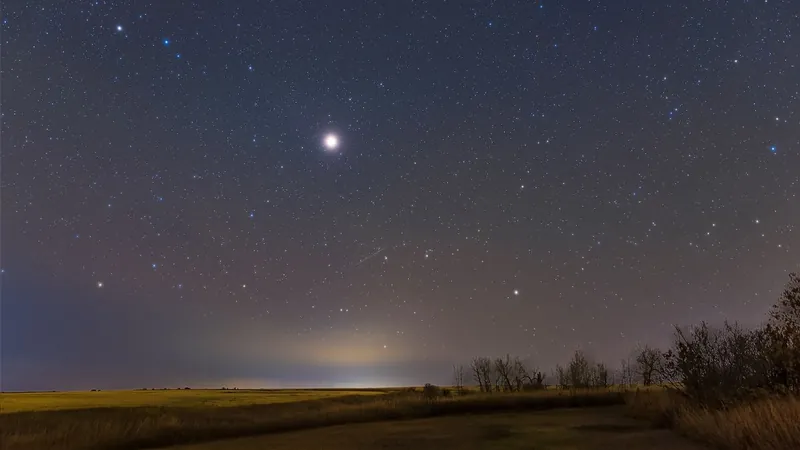
Catch Mars at Its Best This Weekend — No Telescope Needed!
2025-01-10
Author: Olivia
Catch Mars at Its Best This Weekend — No Telescope Needed!
This weekend, stargazers are in for a cosmic treat as Mars will shine brighter than it has since December 2022, reaching a spectacular astronomical event known as "opposition." This phenomenon occurs when Earth is positioned directly between Mars and the Sun, allowing viewers to enjoy unparalleled views of the Red Planet with just their naked eye, binoculars, or telescopes. Don’t miss this opportunity, as it won’t be until 2027 that Mars comes this close and appears so vibrant again.
Mark your calendars for Monday, January 13, when an exciting lunar event will take place: a full Wolf Moon will pass in front of Mars in a rare occurrence known as a lunar occultation. This will create a breathtaking spectacle, allowing viewers to witness Mars fleetingly disappearing and reappearing as it moves behind the moon.
Key Details About Mars at Opposition
The peak of this event will occur on January 16, when Mars will glow a stunning golden hue in the constellation Gemini. Just a few days prior, on January 12, Mars will reach its closest approach to Earth since its last opposition in 2022, sitting just 59.7 million miles (96.1 million kilometers) away. This period of brightness is partially attributed to the elliptical orbits of both planets, which maximize visibility slightly before opposition.
To catch a glimpse of Mars at its pinnacle, look east at sunset between January 12 and January 16. The Red Planet will rise at sunset, remain visible throughout the night, and set in the west at sunrise. At a brightness level of magnitude -1.4, it will dominate the night sky, easily outshining every star in the vicinity. The only competition will come from Venus, which will shine even brighter at magnitude -4.3 but will set a couple of hours after sunset.
Bonus Skywatching Event: Wolf Moon Occultation
Additionally, don’t miss the chance to see the full moon photobomb Mars during the night of January 13-14. As the full Wolf Moon temporarily obscures Mars, it will provide a unique opportunity for stunning photographs and a memorable stargazing experience. This intriguing celestial setup will occur again on February 9, when Mars aligns beautifully with a waxing gibbous moon, creating another stunning visual as the two objects appear closely positioned in the sky.
Although Mars will display remarkable brightness this month, it will face a notable challenge from Venus later in January. Between January 28 and February 27, Venus will become exceptionally luminous in the evening sky, reaching its peak brilliance on February 14. Don’t let this deter your Mars-watching plans – the next few weeks promise a dazzling array of astronomical wonders for fans of the night sky!
So grab your binoculars, gather some friends, and prepare to enjoy a spectacular cosmic show that’s sure to leave a lasting impression!



 Brasil (PT)
Brasil (PT)
 Canada (EN)
Canada (EN)
 Chile (ES)
Chile (ES)
 Česko (CS)
Česko (CS)
 대한민국 (KO)
대한민국 (KO)
 España (ES)
España (ES)
 France (FR)
France (FR)
 Hong Kong (EN)
Hong Kong (EN)
 Italia (IT)
Italia (IT)
 日本 (JA)
日本 (JA)
 Magyarország (HU)
Magyarország (HU)
 Norge (NO)
Norge (NO)
 Polska (PL)
Polska (PL)
 Schweiz (DE)
Schweiz (DE)
 Singapore (EN)
Singapore (EN)
 Sverige (SV)
Sverige (SV)
 Suomi (FI)
Suomi (FI)
 Türkiye (TR)
Türkiye (TR)
 الإمارات العربية المتحدة (AR)
الإمارات العربية المتحدة (AR)